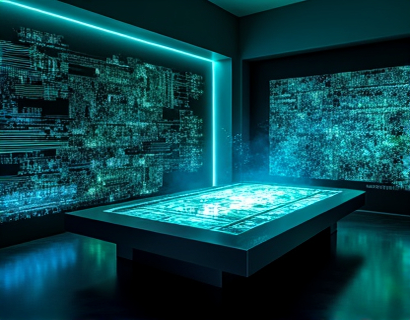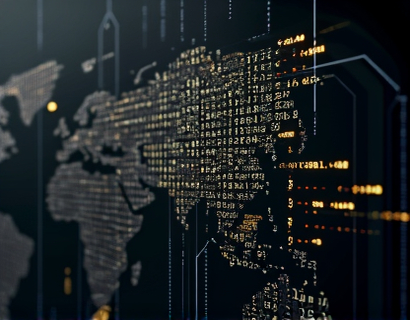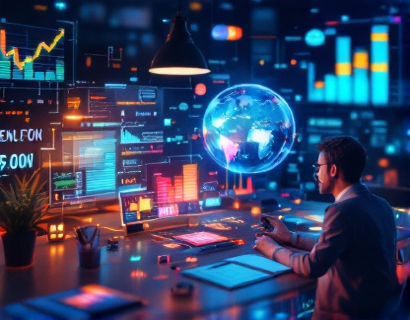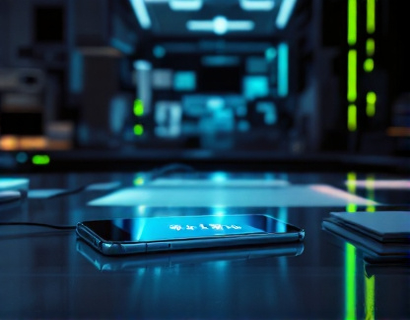AI-Driven Exploration of Egyptian Heritage: Insights and Authentic Artifact Shopping Experience
In the realm of ancient civilizations, few hold as much fascination and mystique as Ancient Egypt. The pyramids, the hieroglyphs, the gods and pharaohs - all elements that have captivated human imagination for millennia. Today, with the advent of artificial intelligence, the study and appreciation of Egyptian heritage have reached new heights. This article delves into how AI technology is revolutionizing our understanding of Ancient Egypt, offering profound insights and a unique shopping experience for authentic artifacts.
Unveiling Ancient Secrets with AI
The integration of AI in the study of Ancient Egypt has opened up unprecedented avenues for research and discovery. AI algorithms, capable of processing vast amounts of data, have become invaluable tools for archaeologists and historians. These technologies assist in deciphering hieroglyphs, analyzing artifacts, and even reconstructing ancient environments. For instance, machine learning models can recognize patterns in hieroglyphic inscriptions, aiding in translations and providing deeper insights into the language and culture of the Egyptians.
One of the most significant contributions of AI is in the field of artifact authentication. Through advanced imaging techniques and pattern recognition, AI can help distinguish genuine artifacts from replicas. This is crucial for collectors and museums, ensuring that the items they possess and display are authentic pieces of history. The precision and accuracy offered by AI in this context are unparalleled, providing a level of confidence that traditional methods cannot match.
Enhanced Educational Resources
The educational value of AI in exploring Egyptian heritage cannot be overstated. Interactive platforms powered by AI offer immersive learning experiences, allowing enthusiasts and students to explore ancient Egypt in a dynamic and engaging way. Virtual reality (VR) and augmented reality (AR) applications, enhanced by AI, transport users to the banks of the Nile, the interior of pyramids, and the bustling streets of ancient cities. These technologies make history tangible, fostering a deeper connection and understanding of the civilization.
Online courses and educational modules, enriched with AI-driven content, provide comprehensive learning paths. From the daily life of ancient Egyptians to the construction techniques of the pyramids, these resources cover a wide spectrum of topics. AI chatbots and virtual assistants further enhance the learning experience, answering questions and providing personalized insights based on the user's interests and progress.
Curated Collection of Authentic Artifacts
For those who wish to bring a piece of Ancient Egypt into their homes, a curated selection of authentic artifacts is available. These items are not just decorative pieces but tangible connections to a rich and storied past. The process of sourcing these artifacts involves rigorous authentication, ensuring that each item is a genuine relic from ancient times.
The selection includes a variety of items such as jewelry, pottery, tools, and decorative objects. Each piece is accompanied by detailed descriptions and historical context, providing owners with a deeper appreciation of their acquisition. The authenticity of these artifacts is guaranteed, backed by expert assessments and, where possible, supported by AI analysis.
Jewelry: A Glimpse into Ancient Adornment
Ancient Egyptian jewelry is renowned for its intricate designs and symbolic meanings. Pieces such as collars, earrings, and amulets were not only beautiful but also held significant cultural and religious importance. AI-assisted authentication ensures that the jewelry available for purchase is genuine, with each piece telling a story of its own.
For example, a golden collar adorned with lapis lazuli and carnelian would not only be a stunning addition to any collection but also a symbol of the sun god Ra and the afterlife journey. The detailed craftsmanship and the materials used offer insights into the technological and artistic capabilities of the ancient Egyptians.
Pottery: Everyday Life and Artistry
Pottery from Ancient Egypt provides a window into the daily lives of its people. Vessels, jars, and plates were used for both practical and ceremonial purposes. AI-driven analysis helps in identifying the specific periods and regions these items originate from, based on stylistic and material characteristics.
A handcrafted pottery vessel, perhaps used for storing grain or water, can be a beautiful centerpiece in a modern home. The texture and design reflect the skill and artistry of ancient potters, making each piece a unique and valuable addition to a collection.
Tools and Utensils: Insights into Daily Life
Tools and utensils from Ancient Egypt offer a practical perspective on the daily activities and occupations of its people. AI helps in categorizing and dating these items, providing context about the industries and trades of the time. For instance, stone tools for agriculture or metal implements for craftsmanship can be sourced and purchased, each with a story of its use in ancient times.
Consider a well-preserved stone sickle, its blade still sharp after millennia. This tool not only serves as a functional piece but also as a tangible link to the agricultural practices of the past. The detailed history and significance of such items enhance the value and appeal for collectors and enthusiasts.
Authenticity and Provenance
Ensuring the authenticity and provenance of artifacts is paramount in the collecting community. AI plays a crucial role in this process through advanced verification techniques. High-resolution imaging, 3D scanning, and chemical analysis are some of the methods employed to authenticate artifacts. AI algorithms can detect subtle differences and inconsistencies that might indicate a fake.
Provenance, or the history of ownership, is another critical aspect. AI can trace the ownership history of an artifact, cross-referencing records and databases to ensure a clear and legitimate chain of ownership. This transparency builds trust and confidence among collectors, making the shopping experience more secure and satisfying.
Personalized Shopping Experience
The integration of AI in the shopping experience for ancient Egyptian artifacts goes beyond mere authentication. AI-driven recommendation systems analyze user preferences and browsing history to suggest items that align with their interests. Whether a collector is looking for a specific type of jewelry, a particular era's pottery, or a certain material, AI can curate a personalized selection.
Moreover, AI chatbots provide instant assistance, answering questions and offering detailed information about each artifact. This interactive support ensures that customers have all the necessary information to make informed decisions, enhancing the overall shopping experience.
Supporting Cultural Preservation
Beyond the personal and educational benefits, the purchase of authentic ancient Egyptian artifacts supports cultural preservation efforts. Proceeds from sales often go towards conserving archaeological sites, funding research, and supporting local communities. AI helps in tracking these contributions, ensuring that the financial impact is maximized and transparently reported.
By choosing to purchase authentic artifacts, collectors contribute to the preservation of Egypt's rich heritage. AI ensures that these contributions are made with full knowledge and ethical considerations, aligning the interests of collectors with the broader goals of cultural preservation.
Conclusion
The convergence of AI technology and ancient Egyptian heritage has opened new frontiers in understanding and appreciating one of the world's most fascinating civilizations. Through AI-driven insights and a curated selection of authentic artifacts, enthusiasts and learners can embark on a journey through time, bringing the magic of Egypt into their lives. Whether for educational purposes, personal collection, or support of cultural preservation, the AI-enhanced experience offers a unique and enriching encounter with ancient Egypt.











































